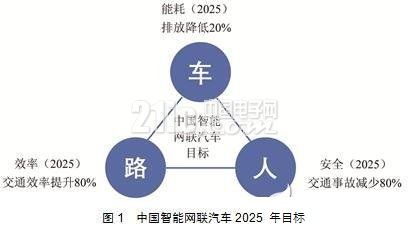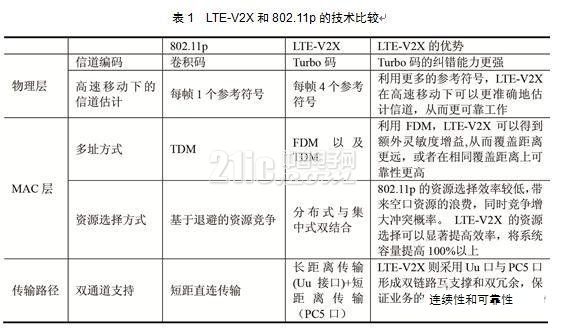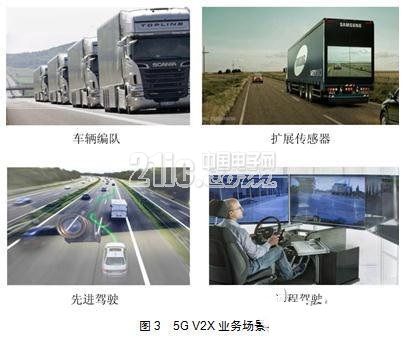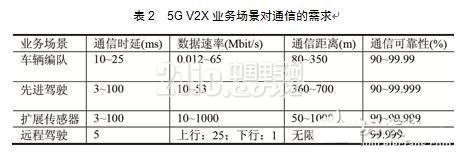1 Introduction
This article refers to the address: http://

In recent years, as car ownership continues to grow, road carrying capacity has reached saturation in many cities, and traffic safety, travel efficiency, and environmental protection have become increasingly prominent. In this context, the intelligentization and networking of automobiles has become an important way to solve these problems, and has been highly valued by the industry. The birth and rapid development of the Internet of Vehicles has revolutionized the automotive industry and changed people's lives. Internet of Vehicles has become the only means to achieve the goal of China Intelligent Networked Cars in 2025 (see Figure 1).
In the development of the Internet of Vehicles, wireless communication technology plays a key role in the development and evolution of vehicle networking communication. In the era of the Internet of Things, where vehicle-mounted terminals are rapidly increasing and vehicle communication needs are increasing, how to meet the low-latency, high-reliability, high-transmission rate, and high-capacity requirements of vehicle communication in high-density scenarios is the key to wireless communication networks. challenge.
2 The necessity of car network communication
The Internet of Vehicles (V2X: Vehicle to Everything) is a vehicle (V2X: Vehicle to Everything) that utilizes in-vehicle electronic sensing devices to enable vehicles, roads, and vehicles through mobile communication technologies, car navigation systems, intelligent terminal devices, and information network platforms. Real-time networking between vehicles, vehicles and people, vehicles and the Internet to realize information interconnection and interoperability, thus effectively monitoring, scheduling, and managing network systems for vehicles, people, objects, roads, and locations. It is the foundation and key technology for smart cars, autonomous driving and intelligent transportation systems in the future.
As the intelligent bicycle technology of the vehicle, the Advanced Driver Assistant System (ADAS) is the initial stage of vehicle intelligence and is an active safety technology for improving safety. ADAS uses various sensors (cameras, radar, lasers, and ultrasonics) installed in the car to collect environmental data inside and outside the vehicle, and to identify and detect static and dynamic objects, so that the driver can get the fastest time. Identify the dangers that may occur and thus increase safety. Early ADAS technology was mainly based on passive alarms. When the vehicle detected a potential hazard, it would issue an alarm to alert the driver to abnormal vehicle or road conditions. The latest ADAS technology has achieved active intervention. However, there are certain limitations in the application of ADAS technology:
(1) ADAS's sensing system with millimeter wave radar plus camera cannot achieve accurate perception of all-weather road conditions. Because ADAS is a bicycle intelligent technology, the sensor cost is high and the working distance is limited. At the same time, it is greatly affected by weather conditions such as rain, snow and smog, which is easy to cause system error, which leads to safety accidents.
(2) ADAS technology cannot cover the basic application of intelligent transportation. The European Telecommunications Standardization Institute (ETSI: European Telecommunica TIons Standards InsTItute) defines a set of basic applications for intelligent transportation in its technical report TR 102 638, which contains 54 applications. TelemaTIcs in-vehicle information service provides 25 information service applications, ADAS can provide 18 early warning driving assistance applications, but the remaining 11 key driving assistance functions ADAS can not provide services, such as intersection collision warning.
The vehicle network V2X technology can extend the vehicle's sensing range to hundreds of meters, which is superior to the radar and optical camera detection range in the ADAS system. Combining the vehicle network V2X technology with various detection methods of the ADAS system, with the help of the integrated information processing technology, it can effectively improve the driving safety and traffic efficiency. The organic combination of bicycle intelligence and vehicle networking ultimately leads to driverless driving.
3 car networking communication scene
The Internet of Vehicles mainly includes four application scenarios: V2N (Vehicle to Network), Vehicle to Vehicle (V2V: Vehicle to Vehicle), Vehicle to Infrastructure (V2I: Vehicle to Infrastructure), and Vehicle Connect (V2P: Vehicle to Pedestrian), the purpose of intelligent transportation through the effective coordination of people, cars and roads.
(1) V2N is currently the most widely used car networking scenario. Its main function is to enable vehicles to connect to cloud servers through mobile networks, using navigation, entertainment and anti-theft applications provided by cloud servers.
(2) V2V is used for bidirectional data transmission between vehicles. Through V2V, the vehicle can collect the speed, position, direction and alarm information of the surrounding vehicles in real time, mainly used in the anti-collision safety system between vehicles. In addition, the exchange function of pictures, text messages, audio and video, etc. can also be realized through inter-vehicle communication.
(3) V2I is an application in which vehicles communicate with roads and even other infrastructure such as traffic lights, roadblocks, etc. Through the V2I system, the vehicle can obtain road management information such as traffic light signal timing and location-based vehicle service information, and is mainly applied to real-time information services, vehicle operation monitoring, and electronic toll management.
(4) V2P refers to the communication between pedestrians using mobile electronic devices, such as laptops, smart phones or other handheld devices and in-vehicle electronic devices. The important application scenario is that vehicles send security warnings to road pedestrians or non-motor vehicles.
4 Comparison of existing vehicle networking communication technologies
At present, the vehicle networking communication technology is divided into two camps: IEEE 802.11p (the underlying wireless communication technology used for DSRC dedicated short-range communication) and 3GPP C-V2X (V2X wireless communication technology based on cellular network).
4.1 DSRC/IEEE 802.11p
Dedicated Short Range CommunicaTIons (DSRC) is a short-range wireless communication technology specifically designed for the V2VV2I communication standard. DSRC enables real-time, accurate and reliable bi-directional transmission of images, voice and data over a small area. DSRC development is relatively mature. The international DSRC standards mainly include the three camps of Europe, America and Japan, ASTM/IEEE in the US, ARIBSTD-T75 and ARIBSTD-T88 in Japan, and CEN/TC278 in Europe.
In order to promote the standardization and industrialization of DSRC, the IEEE established the Vehicle Wireless Access (WAVE) Working Group in 2004 to study and upgrade the DSRC standard of the 5.9 GHz band developed by ASTM in the United States, and to design and develop a unified and globally applicable Vehicle networking communication standards. In July 2010, the WAVE Working Group officially released the IEEE 802.11p car networking communication standard, and realized the evolution of the DSRC standard to the 802.11p protocol and the IEEE 1069/WAVE (Wireless Access in the Vehicles Environment) series of standards.
IEEE 802.11p is a communication protocol extended by the IEEE 802.11 standard. It can support the communication and data exchange of driving safety data between adjacent vehicles, and is in line with the relevant applications of intelligent transportation systems. From a technical point of view, the IEEE 802.11p standard has implemented a number of improvements to IEEE 802.11 for vehicle specific environments, such as enhanced hotspot switching, better support for mobile environments, enhanced security, and enhanced identity authentication.
The IEEE 1609 series of standards is proposed to improve the application layer functions of the DSRC standard. It is a high-level series of standards based on the IEEE 802.11p standard that defines data exchange formats between vehicles and between vehicles and roadside infrastructure. Security, etc.
4.2 3GPP C-V2X
C-V2X (Cellular Based V2X) is a car-network communication technology based on mobile cellular networks. The C-V2X based on the LTE cellular network is called LTE-V2X, and the 3GPP has completed the standardization of LTE-V2X in March 2017. In the future, the C-V2X based on the 5G New Radio cellular network is called NR-V2X.
The air interface of the LTE-V2X system is divided into two types, one is the Uu interface, and the base station is required as the control center. The vehicle and the infrastructure and other vehicles need to communicate by transferring the data at the base station to realize communication; the other is the PC5. The interface enables direct transmission of data between vehicles (see Figure 2). There are two working scenarios of LTE-V2X. One is based on the coverage of the cellular network. In this case, the Uu interface of the cellular network can provide services to achieve large bandwidth and large coverage communication, and can also provide services through the PC5 interface. The vehicle has low latency and high reliability direct communication with the surrounding environment nodes; the other is the work environment independent of the cellular network, and provides the vehicle network road service through the PC5 interface in the area without network deployment to meet the traffic safety requirements. In the scenario of cellular network coverage, data transmission can be flexibly and seamlessly switched between the Uu interface and the PC5 interface.

The Uu interface of the LTE-V2X is specifically enhanced based on the Uu interface of the LTE. For example, the LTE broadcast multicast technology is optimized to effectively support the car network, such as a small broadcast area and a flexible area, and the control channel is performed. Crop to further reduce the delay.
The PC5 interface of LTE-V2X is enhanced in many aspects based on Release 12 LTE-D2D (Device to Device) to support fast exchange of vehicle dynamic information (such as position, speed, driving direction, etc.) between vehicles. And an efficient radio resource allocation mechanism, in addition, the physical layer structure has been enhanced to support higher moving speeds (500km / h).
4.3 Comparison of 802.11p and LTE-V2X
802.11p has an objective first-mover advantage and the technology tends to mature. As a car networking technology based on LTE evolution, LTE-V2X has many late-coming advantages.
(1) Technical level
LTE-V2X draws on the experience and deficiencies of 802.11p in the design process, and has significant performance advantages in terms of system capacity and coverage. LTE-V2X adopts a combination of centralized control transmission and distributed transmission, and V2N will be adopted. V2I, V2V and V2P are combined into one organic whole. The LTE-V2X bottom layer has a better link budget, and a more sophisticated channel design and resource allocation scheme to achieve high reliability, wide coverage, and low latency transmission guarantee. And 802.11p is a purely distributed system that cannot achieve overall optimality. The specific comparison of the two at the technical level is shown in Table 1.

(2) Terminal level
On the one hand, LTE-V2X's Telematics module and V2X communication module can share the same chip, which effectively reduces chip complexity and thus reduces chip cost. On the other hand, LTE-V2X further enriches Telematics in-vehicle information service, making users more willing to renew The Telematics business; at the same time, the penetration rate of Telematics also increases the penetration of V2X.
(3) Industry level
First of all, LTE-V2X can be deployed by upgrading the existing LTE network base station equipment by means of a mature LTE network and industry chain. It is not necessary to lay a large number of infrastructure communication modules, and the industry is more likely to develop rapidly. The latest report from the GSA shows [6] that as of the end of January 2017, global operators have signed 764 LTE network contracts covering 196 countries, of which 581 have been commercially deployed. LTE's mature ecosystem attracts telecom operators, and communications equipment manufacturers and automotive companies support car-network communications based on existing LTE networks and technologies, making LTE-V2X a natural choice. Secondly, LTE-V2X is an important card slot for operators to add new connections (cars, bicycles, motorcycles, pedestrians, etc.). Based on LTE-V2X, operators can naturally participate in the Internet of Vehicles industry to provide car-connected network-related services, such as connectivity, data, and services with the most core competitiveness. In addition, LTE-V2X is China's leading vehicle networking technology, which is conducive to domestic enterprises to avoid patent risks, and is conducive to exerting China's influence and expanding to other countries.
In summary, although 802.11p has the first-mover advantage and the technology and industry are relatively mature, it only supports direct communication between vehicles and vehicles. From the perspective of long-term development of intelligent transportation, it is represented by LTE-V2X. The C-V2X technology realizes the convergence of the straight-through and cellular modes, and can be smoothly evolved to 5G in the future, and the application prospect is brighter.
5 5G car networking communication
As the ultimate form of intelligent driving, autonomous vehicle technology relies on communications, artificial intelligence, visual computing, radar, surveillance devices and global positioning systems to work together to allow the computer to operate the vehicle automatically and safely without any human active operation. In the future, in the process of auto-driving and car-network communication, vehicles need to carry out massive and real-time data interaction. The implementation of autonomous vehicles and car-network communications also requires real-time transmission of car navigation information, location information, and data from various sensors of the car to the cloud or other vehicle terminals, requiring higher network bandwidth and lower network latency. Communication technologies such as LTE-V2X and DSRC are not yet possible.
Compared with the current car network communication technology, the key capability indicators of the 5G system have been greatly improved. 5G network transmission delay can reach millisecond level, meet the stringent requirements of the Internet of Vehicles, and ensure the safety of vehicles in high-speed driving; 5G peak rate can reach 10~20Gbit/s, and the connection density can reach 1 million/km2. It can meet the communication needs between vehicles and people and transportation infrastructure in the future car networking environment.
Currently, 5G V2X is in the business scenario and demand determination phase. The 3GPP's Requirements Group (SA1) has basically completed the discussion of the 5G V2X service scenarios and requirements. In the technical report TR 22.886, 25 5G V2X service scenarios are divided into 4 groups (see Figure 3), including:

â— Vehicles Platoonning: Vehicle formations enable vehicles to form a formation and move together. All vehicles in the formation get information from the formation vehicle to manage this formation, and this management information enables the vehicle to travel in the same direction in a more coordinated manner than normal driving (only 2 to 5 m between formation vehicles).
â— Extended Sensors: Extended sensors enable local sensor information and real-time video image information to be exchanged between vehicles, between vehicles and roadside units, between vehicles and pedestrians, and between vehicles and V2X servers. Additional environmental awareness and a more comprehensive understanding of the surrounding environment.

â— Advanced Driving: Advanced driving is used to support semi-automatic or fully automatic driving. Each vehicle shares the sensory data obtained by its own sensors and its own driving intentions to surrounding vehicles, thereby supporting synchronization and coordination of their trajectories among multiple vehicles.
â—Remote Driving: Remote driving enables the remote driver or the vehicle network application server to drive the vehicle remotely. It is suitable for special scenes where passengers cannot drive by themselves or remote vehicles are in a dangerous environment. High reliability and low latency communication are the main requirements for remote driving.
The 3GPP requirements group defines the corresponding requirements for the 5G V2X service scenario from the perspective of wireless communication, as shown in Table 2.
How to meet the requirements of low latency, high reliability, high transmission rate and high capacity of 5G V2X communication in high-density vehicle scenarios is a challenge for 5G vehicle networking communication network, and also a key research work of 5G vehicle networking. The 3GPP RAN confirmed at the 75th plenary meeting in March 2017 that it will study the available spectrum, channel model and evaluation assumptions of 5G V2X from the third quarter of 2017 and is expected to launch V2X communication technology based on 5G new air interface in 2018. It is expected that standard work will be completed around 2020.
6 Outlook
Although the standardization work of the Internet of Vehicles communication has been basically completed, due to the large number of fields involved and the large impact, the developed countries such as North America, the European Union and Japan are still in the test and promotion stage, and large-scale commercialization has not yet been realized. With the continuous development of the automobile industry, from the perspectives of road traffic safety, road congestion, exhaust emissions, and consumer demand, the actual commercial use of car-network communication needs to be put on the agenda as soon as possible.
Overall, in China, cellular-based car-network communication is developing very well under the strong support of the government. LTE-V2X technology is expected to be the first commercial deployment in China in 2018-2019. In the future, LTE-V2X technology will gradually upgrade to 5G V2X technology and maintain backward compatibility for a long time, providing strong support for the realization of China Intelligent Networking Auto 2025 target.
A siren is a loud noise-making device. Civil defense sirens are mounted in fixed locations and used to warn of natural disasters or attacks. Sirens are used on emergency service vehicles such as ambulances, police cars, and fire trucks. There are two general types: pneumatic and electronic.
Many fire sirens (used for calling the volunteer fire fighters) serve double duty as tornado or civil defense sirens, alerting an entire community of impending danger. Most fire
sirens are either mounted on the roof of a fire station or on a pole
next to the fire station. Fire sirens can also be mounted on or near
government buildings, on tall structures such as water towers,
as well as in systems where several sirens are distributed around a
town for better sound coverage. Most fire sirens are single tone and
mechanically driven by electric motors with a rotor attached to the
shaft. Some newer sirens are electronically driven speakers.
Fire sirens are often called "fire whistles", "fire alarms", or
"fire horns". Although there is no standard signaling of fire sirens,
some utilize codes to inform firefighters of the location of the fire.
Civil defense sirens also used as fire sirens often can produce an
alternating "hi-lo" signal (similar to emergency vehicles in many
European countries) as the fire signal, or a slow wail (typically 3x) as
to not confuse the public with the standard civil defense signals of
alert (steady tone) and attack (fast wavering tone). Fire sirens are
often tested once a day at noon and are also called "noon sirens" or
"noon whistles".
The first emergency vehicles relied on a bell. Then in the 70s,
they switched to a duotone airhorn. Then in the 80s, that was overtaken
by an electronic wail.
Piezo Alarm,Siren And Alarm,Piezo Buzzer Siren,Piezo Buzzer Alarm Siren
Jiangsu Huawha Electronices Co.,Ltd , https://www.hnbuzzer.com